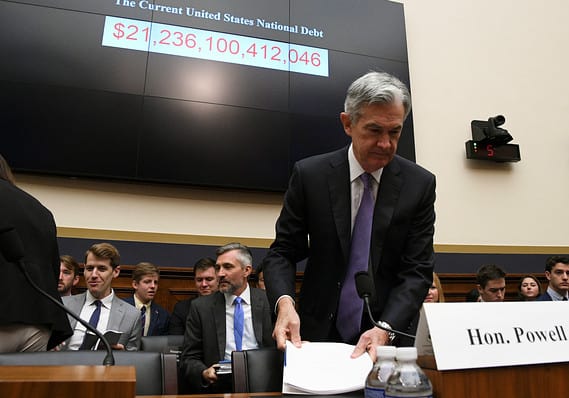
The Federal Reserve will issue a statement declaring strong growth and inflation moving to its 2% target, making clear more interest rate hikes are coming.
“All they need to do is to point to current growth and inflation numbers and it tees up the next rate hike in September,” said Diane Swonk, chief economist at Grant Thornton.
The Federal Open Market Committee will release a statement at 2 p.m. Wednesday after two days of talks.
There will not be updated economic forecasts or a press conference from Fed Chairman Jerome Powell.
Because there is no press conference, analysts are pretty certain the central bank will not move rates at the meeting. Although the Fed always insisted it could raise rates at a non-press-conference meeting, it never has.
This is the second-to-last FOMC meeting without a chance for reporters to ask the Fed chairman any questions. Powell announced last month there will be a press conference after all eight FOMC meetings in 2019.
This year, the Fed has a total of eight meetings, with only four press conferences.
“Next year, we’ll get to hear directly from Powell on subtle changes in views that don’t make it into a statement now,” said Dean Maki, chief economist at Point72 Asset Management.
Analysts welcome the change.
“Why waste four meetings per year,” said Roberto Perli, a former Fed official and now partner at Cornerstone Macro LLC.
The Fed does not have much work to do in its statement, analysts said.
The Fed has penciled in two more moves this year, expected at the meetings with press conferences in September and December. The FOMC raised rates by a quarter-point in March and June to a range between 1.75 and 2%.
Investors are already on board a September rate hike, pricing in 90% chance of a move, according to the CME Group’s FedWatch tool.
Downside risks from trade tensions have not yet altered the Fed’s resolve to follow a gradual course of tightening, said Ellen Zentner, chief U.S. economist for Morgan Stanley.
Michale Feroli, chief U.S. economist at JPMorgan Chase, said the Fed is still scrambling to get interest rates “onsides” or up to neutral, around 3%.
Once the Fed gets rates that high, the decisions will get harder, he noted.
“Once you get back to neutral, it is more of a judgement of whether the economy is overheating,” he said.
























